Since its inception in 1944, the World Bank has expanded from a single institution to an associated group of coordinated development institutions with a shared goal of reducing poverty. The Bank's mission evolved from a facilitator of post-war reconstruction and development to its present day mandate of worldwide poverty alleviation. The World Bank's most recent stated goal is the reduction of poverty in part by creating learning opportunities for countries.
Overview
Details
1818 H Street, NW
Washington, DC 20433
United States
CRL Analysis & Profile
According to the World Bank Focus on Sustainability, 2004 The World Bank's Mission Statement is:
"Our Dream is a World Free of Poverty. To fight poverty with passion and professionalism for lasting results. To help people help themselves and their environment by providing resources, sharing knowledge, building capacity and forging partnerships in the public and private sector. To be an excellent institution able to attract, excite, and nurture diverse and committed staff with exceptional skills who know how to listen and learn."
The World Bank Group's website has set two goals for the world to achieve by 2030:
- End extreme poverty by decreasing the percentage of people living on less than $1.90 a day to no more than 3%.
- Promote shared prosperity by fostering the income growth of the bottom 40% for every country
The World Bank was created at the 1944 the UN Monetary and Financial Conference (also referred to as the Bretton Woods Conference) along with the International Monetary Fund (IMF). The intention behind the founding of the World Bank was to provide temporary loans to low-income countries which were unable to obtain loans commercially. The first country to receive a World Bank loan was France. The Bank's president at the time, John McCloy, chose France over two other applicants, Poland and Chile, the loan was for $250 million. When the Marshall Plan went into effect in 1947, many European countries began receiving aid from other sources. At this point, the World Bank shifted its focus to non-European countries.
As of November 2018, the largest recipients of world bank loans were India ($859 million in 2018) and China ($370 million in 2018).
The World Bank Group (along with IMF) has two main income streams. The first derives from lending operations, charging mainly the borrowing countries; and the second from their income on investments in financial markets. Additionally, the International Development Association (IDA) receives contributions from members, the IDA is a member of the World Bank Group.
The International Bank for Reconstruction and Development (IBRD) provides loans to middle-income countries and to poorer countries able to repay loans at terms based on market rates, raises most of its funds on the world’s financial markets by selling World Bank bonds to investors. By contrast, IDA, which provides interest-free loans to the poorest countries, is funded largely by contributions from donor member governments, who meet every three years to replenish its funds. Additional funds come from IBRD net income, and repayments of IDA credits go into issuing new credits.
The president of the World Bank is, traditionally an American and based on a tacit understanding between the United States and Europe, the president of the World Bank has always been selected from candidates nominated by the United States. In 2012, for the first time, two non-US citizens were nominated. Jim Yong Kim is the current President of the World Bank Group who was first elected in 2012.
The World Bank is related to the UN, though it is not accountable either to the General Assembly or to the Security Council. The World Bank Group comprises five constituent institutions: the International Bank for Reconstruction and Development (IBRD), the International Development Association (IDA), the International Finance Corporation (IFC), the Multilateral Investment Guarantee Agency (MIGA), and the International Centre for Settlement of Investment Disputes (ICSID).
The World Bank operates as a cooperative, made up of 189 member countries. These member countries, or shareholders, are represented by a Board of Governors, who are the ultimate policymakers at the World Bank. The governors delegate specific duties to 25 Executive Directors, who work on-site at the Bank. The World Bank operates day-to-day under the leadership and direction of the president, management and senior staff, and the vice presidents in charge of Global Practices, Cross-Cutting Solutions Areas, regions, and functions.
The World Bank collects and processes large amounts of data and generates them on the basis of economic models. These data and models have gradually been made available to the public in a way that encourages reuse.
